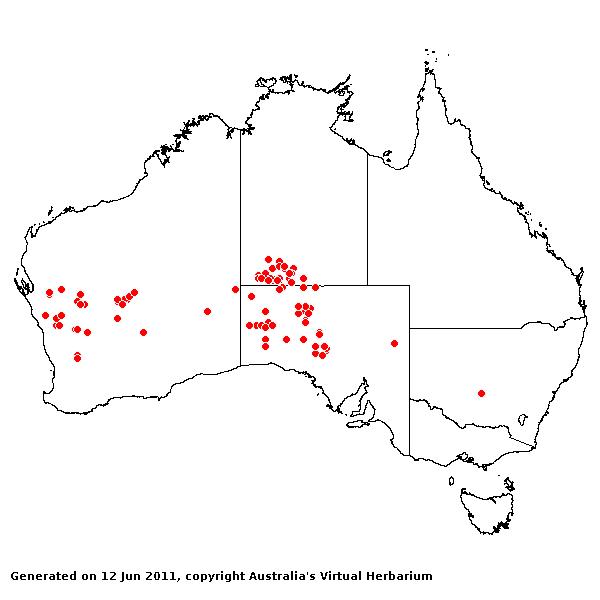Thyridolepis multiculmis (Pilger) S. T. Blake. Contr. Queensland Herb. 13:
32 (1972).
Classification. (GPWG 2001) : Subfamily
Panicoideae. Neurachneae.
Basionym and/or
Replacement Name: Neurachne
multiculmis Pilg., Bot. Jahrb. Syst. 35: 68 (1904).
Type of Basionym or
Protologue Information: HT: Diels 4217, Australia: Western
Australia: Irwin District: near Greenough River along the road to Mullewa (B
(destroyed)).
Recent synonyms:
Neurachne multiculmis.
Key references
(books and floras): [1981] M.Lazarides in J.Jessop (ed)., Flora of
Central Australia (485), [2002] D.Sharp & B.K.Simon, AusGrass,
Grasses of Australia, [2006] J.Jessop, G.R.M.Dashorst, F.M.James, Grasses
of South Australia (504).
Illustrations:
[2006] J.Jessop, G.R.M.Dashorst, F.M.James, Grasses of South Australia (506, fig. 434).
Habit.
Perennial. Culms erect or geniculately ascending, 15–70 cm tall, 3–6 -noded.
Mid-culm internodes glabrous. Mid-culm nodes glabrous or pubescent.
Leaf-sheaths glabrous on surface or hairy. Ligule a fringe of hairs, 0.8–1.2 mm
long. Leaf-blades flat or involute, 2–10 cm long, 2.5–5 mm wide. Leaf-blade
surface indumented.
Inflorescence.
Inflorescence solid, a raceme. Panicle linear, 4.5–10 cm long.
Spikelets.
Spikelets pedicelled. Fertile spikelets 2-flowered, the lower floret barren
(rarely male), the upper fertile, comprising 1 basal sterile florets,
comprising 1 fertile floret(s), without rachilla extension, linear or oblong,
dorsally compressed, 5.6–8 mm long. Rhachilla internodes elongated between
glumes.
Glumes. Glumes
dissimilar, thinner than fertile lemma. Lower glume oblong, cartilaginous,
without keels, 7 -nerved. Lower glume surface indumented. Upper glume
lanceolate or oblong, 5.1–7.5 mm long, coriaceous, without keels, 9 -nerved.
Upper glume surface indumented. Florets. Basal sterile florets 1,
barren, without significant palea. Lemma of lower sterile floret 60–70 % of
length of spikelet, chartaceous, 5 -nerved.
Fertile lemma 4.1–4.9
mm long, without keel. Palea 2 -nerved. Anthers 3.
Continental
Distribution: Australasia.
Australian
Distribution: Western Australia, Northern Territory, South Australia.
Western Australia:
Austin. Northern Territory: Central Australia South. South Australia:
North-western, Lake Eyre, Gairdner-Torrens Basin.
Notes.
Diagnostic features of this distinctive species include the pubescent to
villous lower glume, spikelet length, and shape of the setae. The setae are
relatively short, broad and few in number. On the upper glume the setae are
typically 1.5–2.4 mm long, occur in a discontinuous row on the submargins and
are not interspersed with long villous hairs as in T. mitchelliana.
In shrub steppe
shrublands, acacia shrublands, and arid hummock grasslands. Flowers
sporadically throughout the year.





